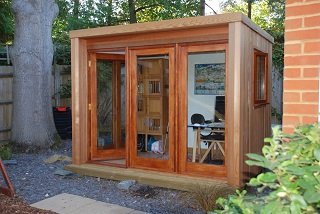From Guest Blogger Bobbi Peterson: What to Know Before Building a Green Home

These kinds of homes are friendlier to the environment than standard homes. They can contain a number of green features and might use less energy, be made of sustainable materials and run on renewable energy.
Interested in building your own green home? While it’s certainly doable, it’s not a project you should enter into lightly. There are a few things you should know before getting started.
Location Matters
Where you build your home is a crucial decision when it comes to green housing, and it’s one of the first you’ll have to make.
If possible, aim to settle down somewhere that has a lot of affordable, renewable energy available. This could be from the grid or something you can harness, such as steady sunlight or high winds.
Even the orientation of your house affects your energy use. Your home should face due south and have lots of windows on the southern side to allow for passive heating and lighting from the sun.
Size Influences Everything Else
Size is another critical consideration when planning your green home. You’ll want to take up as little space as possible and maximize the usability of the space you do have. The bigger your home is, the more energy it will take to heat and cool it — and the more materials it will take to construct.
You Need To Think Long Term
You need to think about the future when deciding on size, location and other aspects of your home. Is your family likely to grow over the next few years? Might you get a new job that you’ll need to commute to? Your housing will have a much bigger impact on the environment if you have to build a new home later. Make sure you give yourself enough space or that it’s possible to expand if need be.
You should also aim to use materials and products that are designed to last a long time or can be easily repaired. The less often you have to replace a part of your home or do major repairs on it, the less resources you’ll have to use.
It’s More Than Just the House
While the materials, energy sources and appliances you use for your home are important, they’re not the only things that affect your environmental impact. Your lifestyle matters, too. It’s easy to fall into the trap of building a green home but not using it in a sustainable way.
If you don’t watch your energy use or have to drive many miles to work each day in a gas-guzzling car, building a green home might not do much for the environment. Be sure to consider all aspects of your environmental impact in relation to your home to maximize its benefits.
You Have Resources Available
Building any home, including a green home, is a huge undertaking. The logistics are complicated, and it requires a lot of time and resources. Just remember that you have plenty of resources available to you that can assist you in building your new abode.
The U.S. Green Buildings Council’s website has a ton of useful resources, as do the multitude of local organizations that exist to help those interested in green building. Check for certifications when considering contractors to work with and products to purchase. These will help you to choose the right ones.
Constructing a green home can be a worthwhile investment, especially if you’re well-informed before beginning the process. Following these tips, conducting thorough research and taking advantage of the resources available to you will help you build a new home that has less of an impact on the environment and on your bank account.
